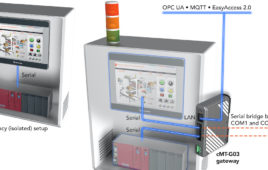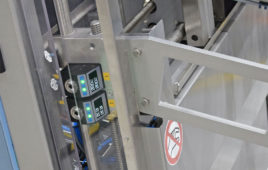
In the midst of the Hobby Lobby court case decision and other conversations about birth control, there has been an announcement about an advancement in contraceptive technology. This is a pretty unique technology that would allow the woman to turn the device on or off, depending on if she was looking to have a child or not.
View: Meaghan’s Minute: Remote Controlled Birth Control
(Full disclosure: I worked at an OB/GYN for a few years while I was in college, so I’ve seen a lot of different contraceptive options, in addition to their benefits and drawbacks.)
The device, which would deliver a daily dose of 30mcg of levonorgestrel, is just 20 X 20 X 7 millimeters and was developed by MicroCHIPS. It solves a few different issues of currently available contraceptives.
It’s worth noting that the technology isn’t actually that new. Time-released medications have been available for a while, it’s just never been used for this particular purpose. This design was actually used and designed in the 1990s. Bill Gates asked—as part of the Bill and Melinda Gates Foundation Family Planning Program—if there was a way to create a device that would allow a woman to control the on/off switch. The dosage is delivered when an electric current is passed through the hermetic titanium and platinum seal on the reservoirs containing the hormone, which is already used in a few different contreceptives. The current, which comes from an internal battery, temporarily melts the seal and allows the dosage to be delivered.
There are a bunch of benefits for this technology.
First, it’s designed to last for 16 years, which is about a decade longer than anything else on the market. The most similar device currently available is an IUD, which must be implanted and removed by a doctor, and generally only lasts between three and five years. There is also a small chance that an IUD will migrate and perforate the uterine lining. Obviously, if the device isn’t placed correctly, it’s not preventing pregnancies.
The other advantage to the MicroCHIPS is because the device delivers the daily dosage with no prompting, it eliminates the need to remember to take a daily pill or return monthly to the GYN for a DEPO shot. It also has that advantage over the DEPO shot, NUVARing, or Ortho EVRA (the patch).
Plus, the obvious advantage to the MicroCHIPS device is that the consumer has total control over whether it is on or off. This means after being implanted, the woman doesn’t have to return to the doctor for the device to be removed like they would with a UTI or Implanon/Nexplanon (birth control devices inserted into the arm.)
Obviously, there are a lot of benefits to this new technology.
Critics are claiming the danger exists in someone “hacking” the birth control devices to—I assume—impregnate a whole host of women for some nefarious purpose. While this might make a somewhat intriguing headline, it’s not really very accurate.[]
First of all, this product won’t hit the market until 2018 at the earliest. It still has to go through a host of tests and clinical trials. Secondly, the chip will be encrypted before it hits the market. Thirdly, and most important, Robert Farra, president of microCHIPS, makes it very clear that communication between the remote and the implant “has to occur as skin contact level distance.” You can’t hack this from across the room.
We must stop shying away from technology over the fear that “it could be hacked.” Yes, a car or pacemaker could be hacked, but it’s unlikely and would require effort. The benefits of this birth control are numerous and, depending on the price point, could help alot of women. The chicken little fear that the sky is falling is counterproductive to technological advancement and–in this case–global health.
The threat from governments taking over and controlling women’s reproductive system remains as big a threat as ever, but not because of this device. On the contrary, this device offers reproductive freedom for 16 years—nearly half of a woman’s viable reproduction window—and leaves the choice up to her.
Filed Under: M2M (machine to machine)




